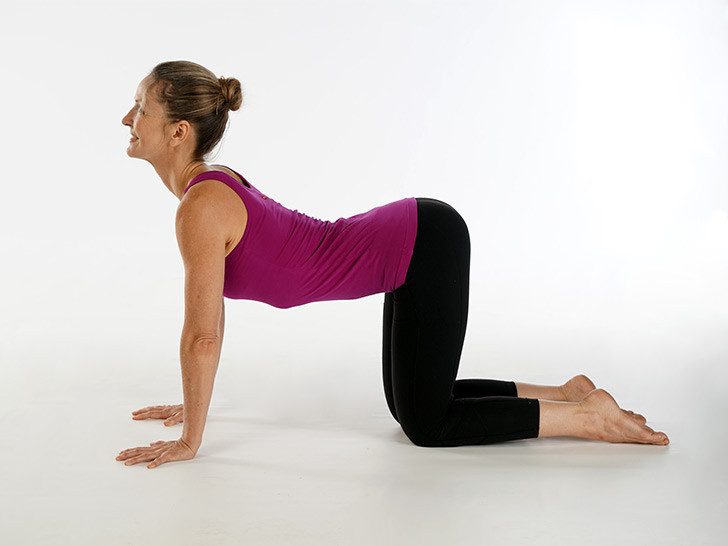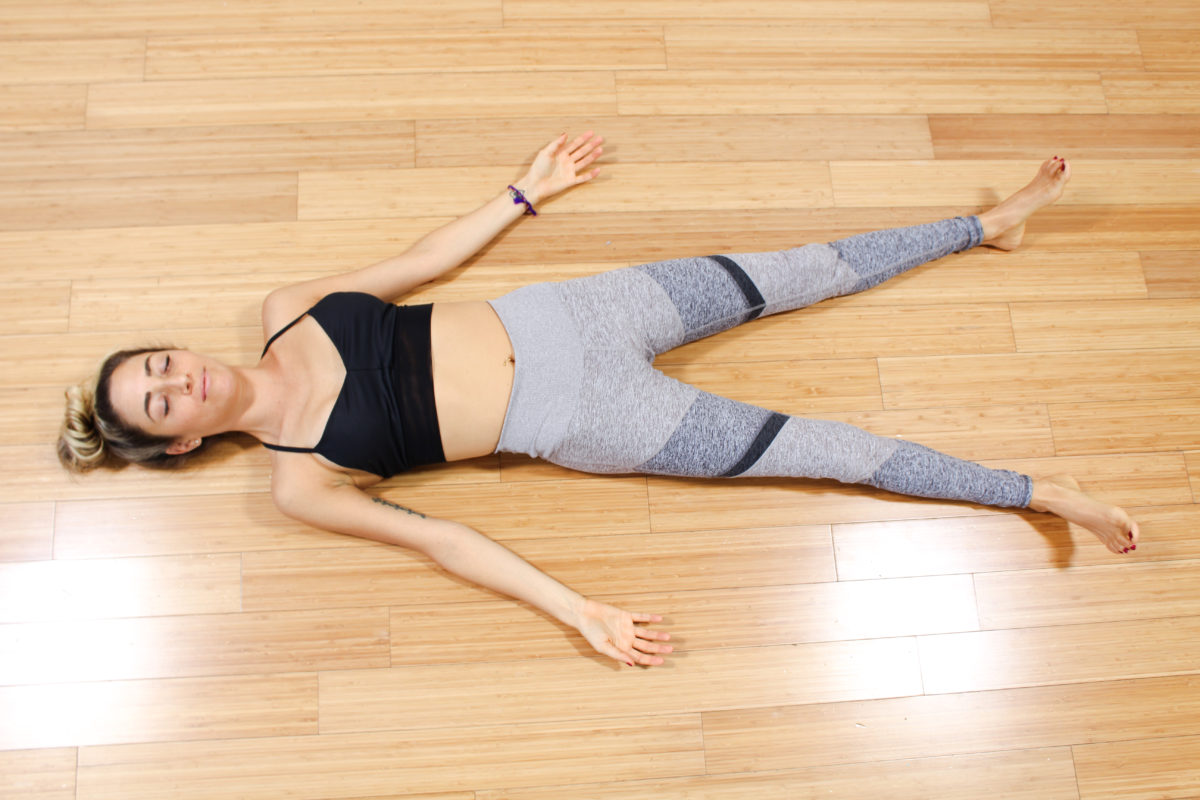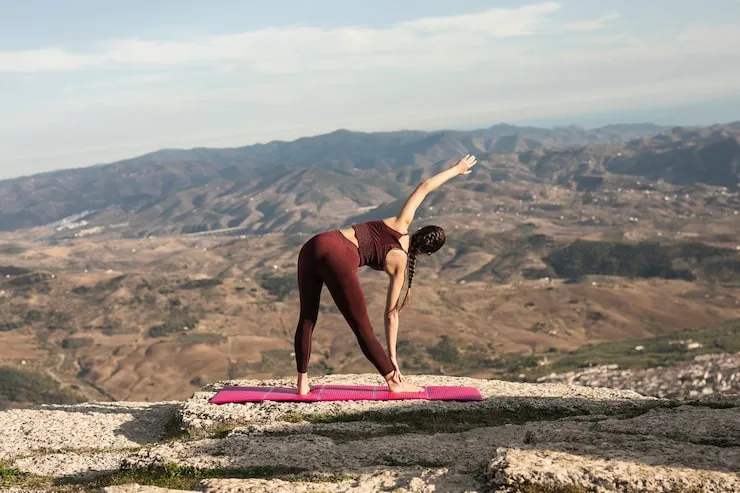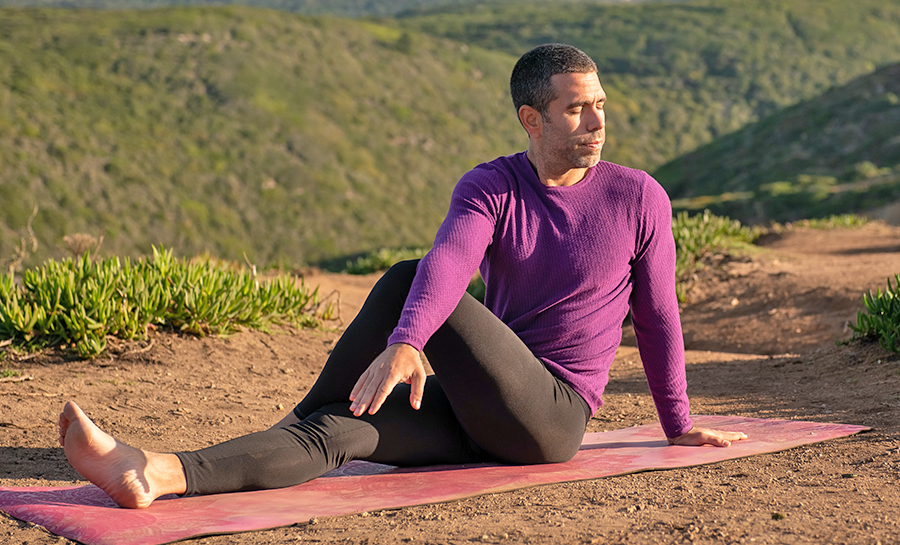7 Beginner Yoga Poses to Get You Through Your First Class
On the off chance that you're a yoga beginner, it's totally commonplace to feel threatened by the fanatic yogis who get ready for class with handstands. Indeed, handstands. However, recall, everybody must beginning some place. "In principle, there are no stances you should be aware before a class — you're going there to learn," says Mandy Ingber, New York Times top rated creator of Yogalosophy: 28-days to A definitive Psyche Body Makeover, also the lady liable for Jennifer Aniston's yoga dependence (and rock-hard abs).
Regardless of whether it's Day 1 of your activity process, your undertaking is straightforward: Toss on some perfectly sized dress (you'll have the option to see your body position better — and keep away from a closet breakdown), then get to know these seven essential postures. While you may not see every one of them in each class, they'll assist you with getting everything rolling, in addition to cause you to feel more good as you progress. So snatch a mat and read on as Ingber and individual yogi Tanya Boulton, a New York-based teacher, separates the must-know fledgling yoga presents you'll need to figure out how to get any yoga practice.
7 Basic Yoga Positions for Beginners

1. Mountain Pose (Tadasana)
What to Be aware: "The mother of all yoga presents," as indicated by Ingber, "mountain just looks simple." This two-footed position is the establishment for the vast majority different places that require mindfulness and equilibrium. "It is through this represent that one tracks down the appropriate arrangement and shape for extra developments," she says.
The most effective method to Make it happen: Stand with feet together and arms next to you. Ground your feet, making a point to squeeze each of the four corners down into the ground. Then, fix your legs, then, at that point, fold your tailbone in as you draw in your thigh muscles. As you breathe in, prolong through your middle and broaden your arms up, then out. Breathe out and deliver your shoulder bones from your head, rearward of your abdomen as you discharge arms back to your sides.
2. Child’s Pose (Balasana)
What to Be aware: Think about this exercise your reset second. Basic in plan, this simple posture loosens up your sensory system and is an extraordinary spot to take a load off during class in the event that you really want one. Got knee issues? Make a point to bring down into this situation with additional consideration.
The most effective method to Make it happen: Begin in a bowing situation with toes tucked under. Bring down your butt towards your feet as you stretch your chest area forward and down with arms broadened. Your stomach ought to be easily laying on thighs, with your brow contacting the mat.
3. Cat/Cow Pose (Marjaryasana to Bitilasana)

What to Be aware: Feline/cow is an extraordinary method for heating up your back, makes sense of Ingber, and prepare your body for descending confronting canine. It likewise helps address versatility (hi, work area occupations) and work your center without the additional weight on your wrists and shoulders that you could feel in a down canine move.
The most effective method to Make it happen: Start with hands and knees on the floor, spine nonpartisan and abs locked in. Take a major breathe in, then, as you breathe out, gather your spine together towards the roof and fold your jawline towards your chest, delivering your neck. On the following breathe in, curve your back and loosen up your abs. Lift your head and tailbone upwards, being mindful so as not to put any tension on your neck by moving excessively fast or profoundly.
4. Downward-Facing Dog (Adho Mukha Svanansana)
What to Be aware: One of the most unmistakable postures of the pack, down canine is an extraordinary method for extending your back, shoulders, arms, hamstrings and indeed, essentially everything. Furthermore, it gets you quiet and focused, as well.
Step by step instructions to Make it happen: Go onto hands and knees with palms simply past your shoulder, fingers pointing advances. Knees ought to be under your hips and toes tucked. Lift your hips and press once more into an Angular shape position with your body. Feet ought to be hip-width separated. Remember, it's alright on the off chance that you can't get your feet to the floor (your hamstrings may be excessively close). Spread through every one of the 10 fingers and toes and move your chest towards your legs.
5. Warrior I (Virabhadrasana I)

What to Be aware: The principal in the Fighter series, this posture reinforces your legs and opens your hips and chest, while additionally extending your arms and legs. While holding this activity, you'll see an expansion in your focus and equilibrium — both fundamental characteristics to bring through a yoga practice.
The most effective method to Make it happen: Begin in mountain present. As you breathe out, step your left foot back around four feet, so you're in a jump position with the right lower leg over the right knee. Raise your arms straight above, biceps by ears, and turn your passed by walking around 90 degrees to confront the left wall. Adjust your passed on heel opposite to your right heel. Grow your chest and pull your shoulders back, then, at that point, lower down toward the floor as you lift your arms up. Ensure your hips stay square to the front, as you keep on relaxing.
6. Warrior II (Virabhadrasana II)
What to Be aware: Like Fighter I, Hero II offers simply a slight variety, with your chest area turned to the side as opposed to looking ahead. You'll in any case receive a similar quad-reinforcing rewards of Hero I, yet you'll likewise open up your hip flexor muscles for more noteworthy adaptability.
The most effective method to Make it happen: Start in mountain present. Breathe out and step your left foot back around four feet, ensuring the impact points are in line. Turn your back foot 90 degrees so that it's presently opposite with the front one. Raise your arms to bear level, lined up with floor, with your right arm before you, and abandoned arm. Twist your front knee so it's straight over lower leg and sink hips low until the front thigh is lined up with floor. Gaze directly ahead, eyes in accordance with your forward looking arm
7. Corpse Pose (Shavasana)

What to Be aware: Lying around may appear to be trivial, yet this is perhaps of the most thoughtful second in any yoga practice. Carcass present quiets the psyche, eases pressure and incites a casual state. (For what reason do you suppose yogis are so chill?)
Step by step instructions to Make it happen: Rests on your back and let your feet tumble to their sides. Bring your arms close by your middle, yet marginally isolated with palms confronting the sky. Loosen up the whole body — your face included. Normally the last posture in a class, you'll remain in this posture somewhere in the range of 30 seconds to five or 10 minutes. Your educator will sign you when to stir your considerations and return to a situated position gradually.
FAQs
What are the 4 original yoga poses?

The Hatha Yoga Pradipika (fifteenth 100 years) determines that of these 84, the initial four are significant, in particular the situated stances Siddhasana, Padmasana, Bhadrasana and Simhasana
Should beginners do yoga everyday?
For amateurs, we suggest doing yoga 1-2 times each week since it will permit you to develop fortitude and adaptability while giving your body time to rest and recover. As your training develops, you might consider adding extra yoga days. Be that as it may, it is fundamental not to go overboard, as this can cause injury and weariness
Will 20 mins of yoga a day make a difference?
One more investigation of north of 700 individuals found that rehearsing only 12 minutes of yoga presents either day to day or each and every other day worked on their bone wellbeing. Furthermore, another limited scale investigation discovered that 20 mins of yoga further developed concentration and working memory. Also, obviously yoga isn't simply one more type of activity.






